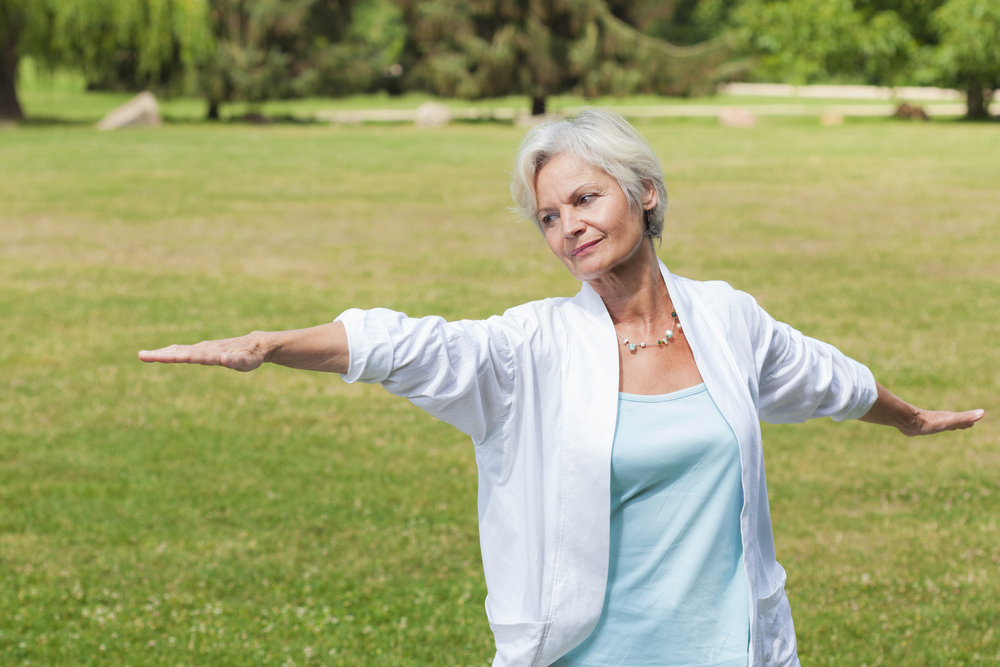Exercises That Help You Skip Slips, Trips and Falls

Balance is one of the crucial elements of our lives that we don’t think about most of the time. It only ever seems to come up when we find ourselves lacking it. Maintaining a healthy sense of balance is an important goal as we age though. Without it, we can end up in situations where we’re placing our feet wrong more often or misjudging how a particular movement will affect us. This can mean a bit more bruising in our late 40s and 50s, but once we pass into our 60s it can end up meaning far worse problems could be coming our way. A fall could end up causing a fractured bone or worse if we’re not careful. That’s why many experts recommend adding balance exercises to our routines as we age. They can help us maintain and refine our sense of balance despite time’s effects. We have a few easy exercises that almost anyone can do to recommend. Feel free to look for others if these aren’t to your taste though.
Weight Shifting
This is the simplest balance exercise available and the least likely to cause any issues if you’re already experiencing problems. Weight shifting involves making the most of relatively simple motions that are easily controlled if you feel them getting away from you. Begin by placing your feet on at hip-width apart and ensuring that you feel properly balanced. This is your start position. Starting from here, slowly shift your weight to one side. The goal is to shift enough weight to one side that you can lift your foot from the floor by leaning. It doesn’t need to come more than a few inches off the floor. Stop at this lift once who hit a position you feel you can hold. Try to hold the position for twenty to thirty seconds, but don’t push yourself beyond your capabilities. Carefully return to your starting position after this and repeat it for the other leg. We recommend doing this ten to sixteen times each to ensure both sides get properly tested.
One-Leg Balance
You can build from simple weight shifting to one-leg balances with relative ease. These involve performing a similar exercise, but distributing your weight in a slightly more pronounced manner to make the effort a bit greater. We recommend keeping the leg you will be lifting close to a wall to give you a position to brace from if you feel your balance begin to falter. Put your side-by-side in a comfortable position to begin within. From this starting position, gradually pick one foot up and bend your knee until it is parallel with the floor. You should try to hold this position for up to thirty seconds if you can. If you cannot, then consider that your balance exercise goal. Return to your starting position and switch to the other leg. Remember that you should not be bracing at any point during this exercise unless you become off balance. Alternate between your legs ten to sixteen times again for an appropriate amount of exercise.
Try Classes
The solo exercises we’ve covered positive steps you can take towards improving your balance in your own home. They’re quite useful when paired with other exercises, but you do have options beyond solo exercises. There are a number of mindful movement classes available that can likewise help you improve your balance and overall fluidity of movement. Yoga tends to be one of the most popular options. The smooth movements and careful practice of forms encourages gradual improvement without putting a heavy strain upon the practitioner to become instantly perfect. A yoga class in turn helps to promote positive reinforcement from other people within it as well for added effect. Tai-chi classes are also a popular option. While the practice’s popularity has fallen some when compared to yoga, it remains just as viable for helping to refine balance over time. It emphasizes more movement with a slightly decreased focused on honing proper breath exercises, but discipline and balance remain important.
There are plenty of approaches available to help anyone refine their balance. It is an important step to take as we age. Being mindful in this way will help minimize the number of uncomfortable slips and similar events that we’re likely to experience as our balance is impacted by age and other things. We encourage you to consider trying some of these exercise options if you’re in your 40s or above. They’ll make more of a difference than you’ll know over time.

